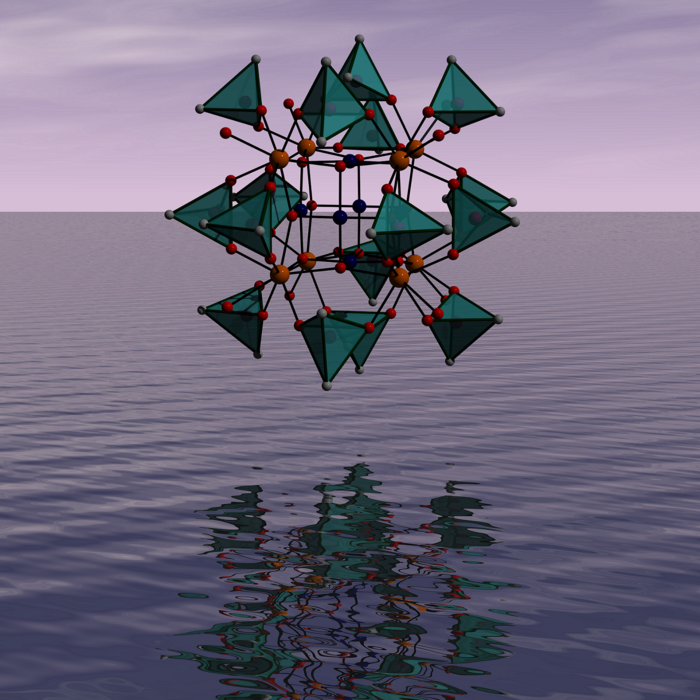Professor Ulrich Kortz is one of the pioneers in the research of anionic metal-oxo clusters, commonly known as polyoxometalates (POMs). His research team identified the polyoxopalladates (POPs) subclass in 2008 and has been working on it ever since.
 Structural representation of the novel cationic palladium-oxo cluster. Image Credit: Jacobs University.
Structural representation of the novel cationic palladium-oxo cluster. Image Credit: Jacobs University.
His team has since published a huge number of these structurally and functionally intriguing compounds. The majority of these chemicals are anionic, which means they are negatively charged.
An experienced researcher, Saurav Bhattacharya, in Professor Kortz’s study group created a series of neutral POP species for the first time in 2020, which was a major advance at the time. He has already discovered two cationic palladium-oxo clusters as a result of his continuing research (POCs).
This is a highlight in our research. By incorporating the rare earth elements cerium or thorium next to palladium, we were able to prepare the first cationic POCs. This now allows us to study their interactions with different anionic species, and takes us into completely new research areas.
Ulrich Kortz, Professor, Department of Life Sciences & Chemistry, Jacobs University
The innovative materials offer a variety of features that might be useful. Biomedical research, for example, can be conducted where supramolecular host-guest chemistry is relevant. Its purpose is to deliver therapeutically active compounds to the body in a specific manner. Carbon dioxide reduction and industrial catalysis are potential applications.
The cationic palladium-oxo clusters are created like a Matryoshka doll in terms of molecular structure. A 6-palladium (II)-oxo unit is surrounded by eight cerium (IV) or thorium (IV) ions in the core. The formula [Pd6O12M8{(CH3)2AsO2}16(H2O)8]4+ (M = Ce, Th) is formed by adding 16 dimethylarsinate groups and eight water molecules to this structure.
Ulrich Kortz enlisted the help of other scientists at Jacobs University to investigate some of the features of the new class of chemicals. The research involved the working groups of chemists Professor Werner Nau and Professor Nikolai Kuhnert, along with physicist Professor Veit Wagner.
Kortz stated, “One of the strengths of Jacobs University is the mutual interest of colleagues in close, transdisciplinary, and collegial collaborations. Our labs are spatially close to each other, and we know and complement each other well.”
Professor Pawel Kulesza of the University of Warsaw, Poland, was also involved.
Journal Reference:
Bhattacharya, S, et al. (2022) Discrete, Cationic Palladium (II)-Oxo Clusters via f-Metal Ion Incorporation and their Macrocyclic Host-Guest Interactions with Sulfonatocalixarenes. Angewandte Chemie doi:10.1002/anie.202203114.